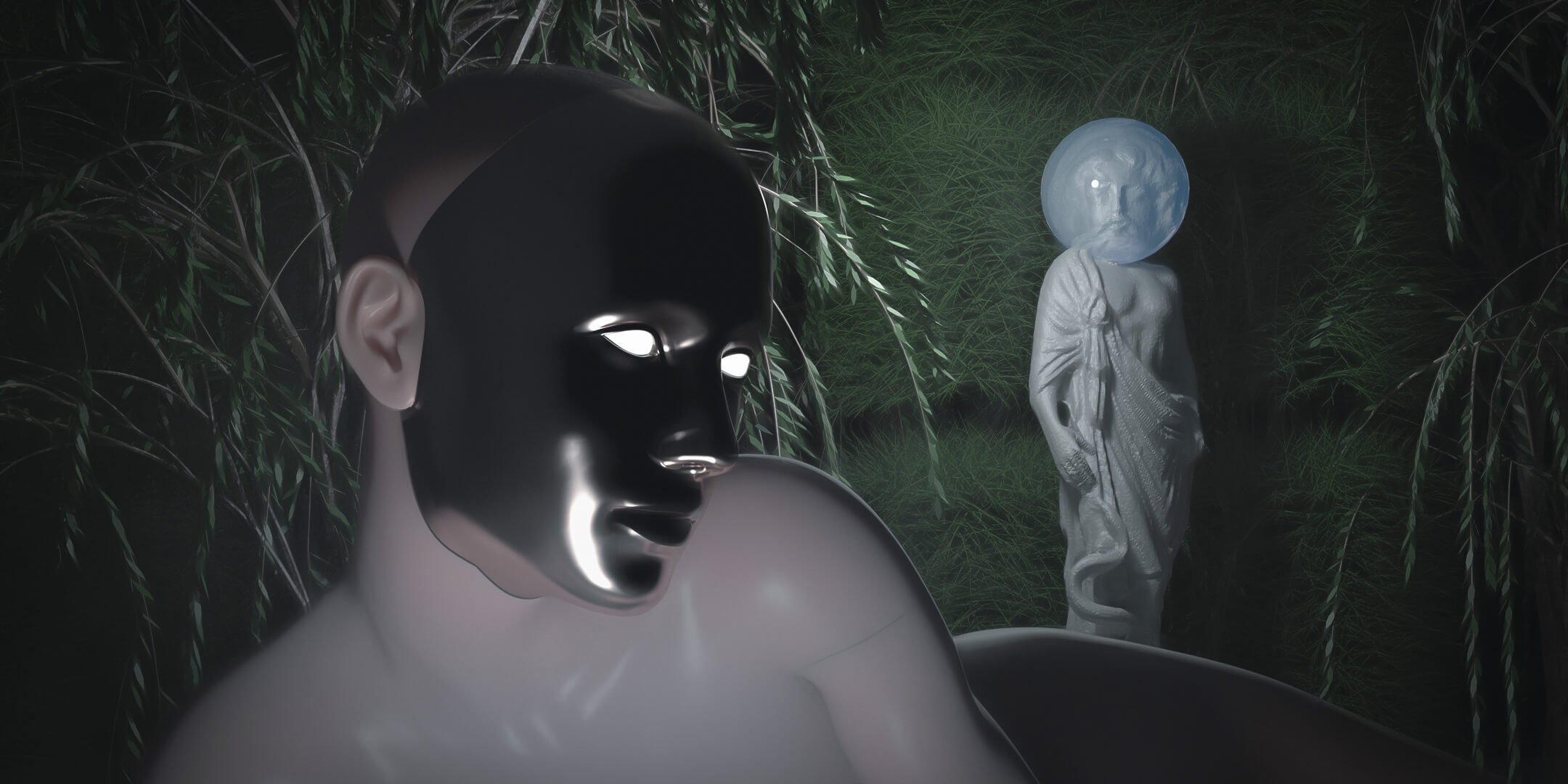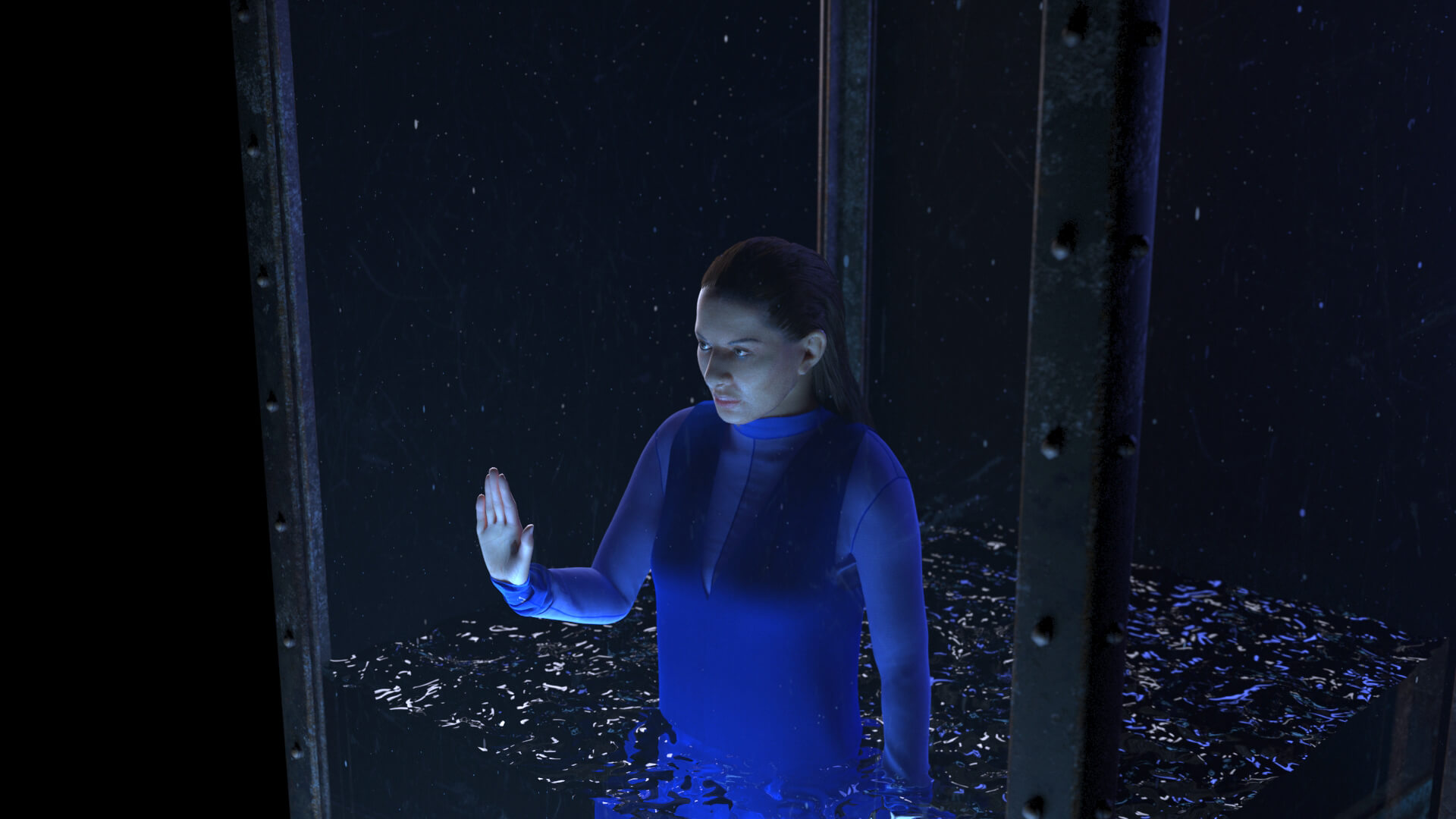On the potential of digital and NFT art. An interview with Serena Tabacchi.
Serena Tabacchi
The Mocda is an entirely digital museum. What is the need in understanding digital art in its own context?
Often, digital artworks are created on devices, so you can explore an exhibition that is designed in a way that relates to the artwork itself. For example, we made an exhibition in a metaverse where we could scale the work, as a vector, on a very large wall. Reproducing it in the real world would not have been possible, as it would not be possible to create exhibition spaces without walls or ceilings or floors. In this way, you create a totally immersive environment that positions you within the artwork. This is possible in a digital format if the work itself is conceived from the beginning to be immersive. This virtual dimension opens up truly fluid and malleable possibilities for exhibitions.
The most traditional of exhibitions can be reproduced with the ambition of greater interactivity, but if you want to be more “cutting edge” you can experiment with the architecture of a virtual space. It depends on the curators and artists. The potential lies in the minimal impact on the physicality of an environment, which you can digitally recreate, creating things that the laws of physics in the real world would not allow.
Traditional museums are often bound by their historicising function and for this reason, are sometimes sceptical regarding innovation. Nevertheless, after the digital and NFT revolution, even the traditional (physical) museum cannot ignore this mass phenomenon. What potential advantages are there of working with a physical museum versus one that exists purely online? Do digital art and NFTs need traditional museums or do traditional museums need digital art and NFTs? Or both?
I think that one needs the other: the traditional museum needs a breath of fresh air and the digital museum needs an authority in this field that, in my opinion, something physically present can give. I think there is also a greater willingness to cooperate than there was a while ago: it’s no longer a competition (although I think a rivalry might come back).
Anyway, a digital museum like ours is already interacting with physical spaces both in Italy and internationally. In Italy we are collaborating with the Meet in Milan, the OGR in Turin, I am working on a project with Palazzo Strozzi in Florence, I am curating a project for the Maxxi in Rome.
This exchange is happening probably because the staff of a traditional museum are not used to working with digital art but there is still the desire to enter this world. Collaborating with other entities allows them to look out on a different landscape, while it allows us to reach an audience that is accustomed to entering these institutions but that may use fewer technological devices.
Actually, digital art has existed since the 1960s, later witnessing a new development with net art in the ’90s. What has changed is the market, which determined a return to the trend of digital art. With all the technological innovation coming from gaming and cinema, digital art is back in this new wave thanks to a series of artists who are being known as names in themselves and no longer within creative agencies.

Prior to NFT technology, the internet allowed digital and virtual art to break out of the market (see, as you mentioned, the pioneers of net art). The NFT could be considered a late-capitalist tool to sell immateriality (or neo-materiality) as if it was an object. In your opinion, does this distort the work of art or enhance it?
It depends on how you see the NFT. In my opinion, it enhances it, but it is not an answer applicable to every case. Today smart contracts allow the application of various functionalities to the work of art, creating very dynamic reactions. For example, with generative art or layered works, it is possible for a collector, the artist, or other external agents to modify the work itself, and therefore there is a constant evolution of the work: this is a dynamic use of the NFT. If instead the NFT is used to create a “digital twin”, the result is completely different.
But yes, NFT can enhance the work. For example, a few years ago Marina Abramovich sold three VR sets with her work [Marina Abramovich, Rising, 2018, e.d.], which consisted of her avatar within a virtual environment. At that time, a legal paper contract was simply drawn up establishing the existence of only three copies. There is a good chance that, if she had done so today using the blockchain, she could have sold for higher amounts, but on a practical level the NFT has the same function as a traditional contract.

The hype for NFT technology has undoubtedly overwhelmed the art market: you see immense enthusiasm and investment by collectors, curators, artists, and art professionals, everyone wants to be part of it. Given your experience, are there any elements of the new field that concern you, or do you fully share in this enthusiasm?
Neither of the two. I’m excited about it, but I’m not fooled by the fact that there’s been a lot of speculation. I am glad that prices have shrunk a bit and that there is less desire to throw oneself blindly into a project of this kind unless it makes sense. Yet, I don’t think this thing is a bubble destined to pass.
All of this happened for a reason. There have historically been economic limitations that have meant that many artists, who often worked as creatives in agencies and graphic studios, in Disney, in video game companies, never felt allowed to call themselves artists or have their own audience. This decentralisation was born as a rebellion, it is a movement born from the bottom. People in social media communities had input from this new technology and have used it to make their way in a very selective sector.
What role could NFTs have within contemporary art and what is their relationship with other contemporary art forms? Is NFT just a way to sell immateriality or does it have an intrinsic artistic value?
Both. As I said before, the NFT could be a “modality” if applied to an already existing digital artwork just to make it unique, while it can be dynamic if applied to generative art. Regarding contemporary art, I think one can not impose on an artist a technology that does not belong to his or her time. Some artists create NFT and they end up being forgotten, others have found success. It always depends on how you do it.


